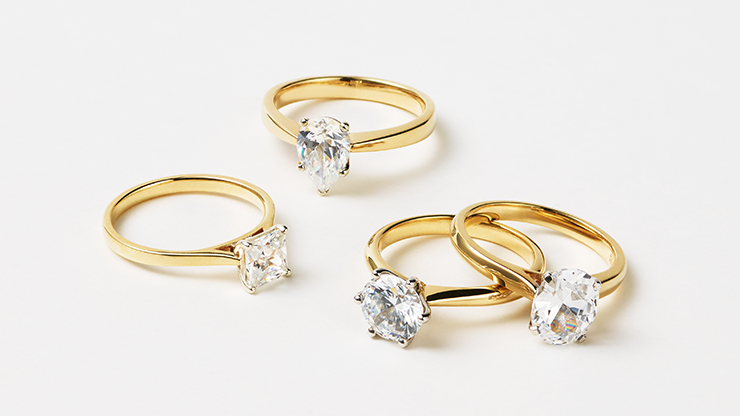Introduction to Man-Made Diamonds
What Are Man-Made Diamonds?
Man-made diamonds, also known as synthetic or cultured diamonds, are created in laboratories rather than being mined from the earth. These diamonds share the same physical and chemical properties as natural diamonds, which means they sparkle just as brilliantly. The only difference? They come with a smaller environmental footprint and often a more affordable price tag.
History and Development
The journey of man made diamonds nz started in the 1950s with pioneering experiments by scientists looking to replicate the natural diamond formation process. Over the decades, technological advances have made it possible to produce high-quality diamonds that are virtually indistinguishable from their natural counterparts.
The Growing Popularity in New Zealand
Why New Zealand is Embracing Man-Made Diamonds
New Zealanders are increasingly turning to man-made diamonds for their ethical and environmental benefits. With a strong emphasis on sustainability and responsible consumption, the allure of these diamonds is particularly strong in a country known for its natural beauty and commitment to conservation.
Market Trends and Consumer Preferences
The market for man-made diamonds in New Zealand is on the rise, driven by both consumer demand for ethical products and advances in diamond production technology. People are drawn to the idea of a beautiful, high-quality gemstone that doesn’t come at the expense of the environment.
Types of Man-Made Diamonds
High-Pressure High-Temperature (HPHT) Diamonds
HPHT diamonds are created by mimicking the intense pressure and temperature conditions found deep within the Earth’s mantle. These diamonds are produced using a press that applies high pressure and temperature to carbon, forming a diamond crystal.
Chemical Vapor Deposition (CVD) Diamonds
CVD diamonds are made using a different approach. Carbon gases are deposited onto a substrate in a vacuum chamber, where they gradually crystallize into diamond form. This method allows for the creation of diamonds that are both high-quality and economically viable.
Differences Between HPHT and CVD
While both HPHT and CVD diamonds are real diamonds, they differ in their creation processes. HPHT diamonds tend to have unique inclusions that can sometimes be detected with specialized equipment, whereas CVD diamonds generally have fewer inclusions and can be produced with a greater degree of control over their clarity and color.
Benefits of Man-Made Diamonds
Ethical and Environmental Advantages
One of the biggest draws of man-made diamonds is their ethical edge. They avoid the ethical issues often associated with traditional diamond mining, such as labor exploitation and environmental destruction. Additionally, they require less energy and have a significantly lower carbon footprint.
Cost-Effectiveness
Man-made diamonds are typically more affordable than natural diamonds. This is because they are less expensive to produce and don’t involve the extensive mining and transportation processes that add to the cost of natural stones.
How Man-Made Diamonds Are Made
The HPHT Process
In the HPHT process, diamonds are created by subjecting carbon to extremely high pressures and temperatures. The process involves a high-pressure press that replicates the natural conditions under which diamonds form, allowing carbon to crystallize into diamond form.
The CVD Process
The CVD process involves placing a diamond seed into a vacuum chamber where a carbon-rich gas is introduced. The gas is ionized, and carbon atoms are deposited onto the seed, gradually forming a diamond. This method allows for precise control over the diamond’s properties, resulting in high-quality stones.
Choosing a Man-Made Diamond in New Zealand
Certification and Quality Assurance
When purchasing a man-made diamond, certification is key. Reputable labs like the Gemological Institute of America (GIA) or the International Gemological Institute (IGI) provide certification that guarantees the diamond’s authenticity and quality.
What to Look for When Buying
Look for clarity, color, cut, and carat weight, just as you would with natural diamonds. Additionally, ensure that the diamond comes with a certification from a trusted gemological institute to confirm its quality and origin.
Popular Brands and Jewelers in New Zealand
Top Brands Offering Man-Made Diamonds
Several brands are making waves in the man-made diamond sector in New Zealand. Companies like Diamond Foundry and Brilliant Earth offer high-quality synthetic lab created diamonds with a range of styles and price points.
Recommended Jewelers and Retailers
Local jewelers such as Michael Hill and Walker & Hall are also embracing the trend, offering a selection of man-made diamonds. These retailers provide the advantage of a personalized shopping experience and expert advice on selecting the perfect stone.
Man-Made Diamonds vs. Natural Diamonds
Key Differences
While man-made diamonds and natural diamonds are chemically identical, man-made diamonds often have different internal characteristics due to their creation processes. Man-made diamonds may also come with different price points and ethical implications.
Similarities and Misconceptions
Both types of diamonds offer the same brilliance and durability. A common misconception is that man-made diamonds are inferior, but in reality, they are simply another option with different origins and benefits.
Future Trends in the Man-Made Diamond Industry
Technological Advancements
The technology behind man-made diamonds is continually evolving, leading to improvements in quality and affordability. Innovations in production methods and better understanding of diamond growth processes are likely to enhance the value of synthetic diamonds further.
Market Predictions
As awareness grows and technology advances, the market for man-made diamonds is expected to expand. More consumers will likely choose these ethical and cost-effective alternatives, shaping the future of the diamond industry.
Conclusion
Man-made diamonds represent a fascinating intersection of science and style, offering an ethical, environmentally friendly alternative to traditional diamonds. With their growing popularity in New Zealand and advancements in production technology, these gems are not just a trend but a glimpse into the future of the diamond industry. Whether you’re drawn by their sustainability, cost-effectiveness, or simply their beauty, man-made diamonds are a choice that aligns with modern values and innovations.

